Showing Spotlights 57 - 64 of 87 in category All (newest first):
 The food industry is excited about the potential of nanotechnology. Food companies are very much involved in exploring and implementing nanotechnology applications in food processing, packaging and even growing - but you don't hear about it anymore. At least not from the companies. Large industrial food companies, no stranger to big and expensive media campaigns, have buried the subject of nanotechnology in their public relations graveyard. Take Kraft Foods for example. While it took the industry's nanotechnology lead when it established the Nanotek Consortium in 2000, it has since pulled back completely on the PR front. The Nanotek Consortium even was renamed the 'Interdisciplinary Network of Emerging Science and Technologies' (INEST), is now sponsored by Altria, and its single webpage makes no mention of food at all. Doing our regular check on the websites of large food companies we again found not a single reference to 'nanotechnology' or even 'nano'. The same is true for large food industry associations such as the Grocery Manufacturers/Food Products Association (GMA/FPA), which represents the world's leading food, beverage and consumer products companies. Faced with a complete nanotechnology communications blackout from the manufacturers, it is left to activist groups like Friends of the Earth to frame the discussion. These groups are trying to figure out what the food industry is up to and if there might be any risks involved that we should know about.
The food industry is excited about the potential of nanotechnology. Food companies are very much involved in exploring and implementing nanotechnology applications in food processing, packaging and even growing - but you don't hear about it anymore. At least not from the companies. Large industrial food companies, no stranger to big and expensive media campaigns, have buried the subject of nanotechnology in their public relations graveyard. Take Kraft Foods for example. While it took the industry's nanotechnology lead when it established the Nanotek Consortium in 2000, it has since pulled back completely on the PR front. The Nanotek Consortium even was renamed the 'Interdisciplinary Network of Emerging Science and Technologies' (INEST), is now sponsored by Altria, and its single webpage makes no mention of food at all. Doing our regular check on the websites of large food companies we again found not a single reference to 'nanotechnology' or even 'nano'. The same is true for large food industry associations such as the Grocery Manufacturers/Food Products Association (GMA/FPA), which represents the world's leading food, beverage and consumer products companies. Faced with a complete nanotechnology communications blackout from the manufacturers, it is left to activist groups like Friends of the Earth to frame the discussion. These groups are trying to figure out what the food industry is up to and if there might be any risks involved that we should know about.
Apr 16th, 2008
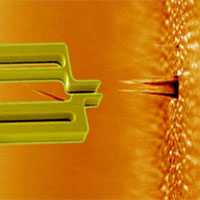 An Interagency Working Group on Manufacturing Research and Development established by the National Science and Technology Council has identified three technology areas as key research and development priorities for future manufacturing: Manufacturing for Hydrogen Technologies; Nanomanufacturing; and Intelligent and Integrated Manufacturing. The Working Group summarized their findings in a new report titled 'Manufacturing the Future.' Although this report is specific to the U.S., most of its general conclusions and recommendations apply to most other industrialized nations and their industrial nanotechnology efforts as well. Nanotechnology is viewed throughout the world as a critical driver of future economic growth and as a means to addressing some of humanity's most vexing challenges. Because of its broad range of prospective uses, nanotechnology has the potential to impact virtually every industry, from aerospace and energy to healthcare and agriculture. Nanomanufacturing integrates science and engineering knowledge and develops new processes and systems to assure quality nanomaterials, to control the assembly of molecular-scale elements, and to predictably incorporate nanoscale elements into nano-, micro-, and macroscale products utilizing new design methods and tools. Efforts in this area are directed toward enabling the mass production of reliable and affordable nanoscale materials, structures, devices, and systems. Nanomanufacturing includes the integration of ultra-miniaturized top-down processes and evolving bottom-up or self-assembly processes.
An Interagency Working Group on Manufacturing Research and Development established by the National Science and Technology Council has identified three technology areas as key research and development priorities for future manufacturing: Manufacturing for Hydrogen Technologies; Nanomanufacturing; and Intelligent and Integrated Manufacturing. The Working Group summarized their findings in a new report titled 'Manufacturing the Future.' Although this report is specific to the U.S., most of its general conclusions and recommendations apply to most other industrialized nations and their industrial nanotechnology efforts as well. Nanotechnology is viewed throughout the world as a critical driver of future economic growth and as a means to addressing some of humanity's most vexing challenges. Because of its broad range of prospective uses, nanotechnology has the potential to impact virtually every industry, from aerospace and energy to healthcare and agriculture. Nanomanufacturing integrates science and engineering knowledge and develops new processes and systems to assure quality nanomaterials, to control the assembly of molecular-scale elements, and to predictably incorporate nanoscale elements into nano-, micro-, and macroscale products utilizing new design methods and tools. Efforts in this area are directed toward enabling the mass production of reliable and affordable nanoscale materials, structures, devices, and systems. Nanomanufacturing includes the integration of ultra-miniaturized top-down processes and evolving bottom-up or self-assembly processes.
Mar 28th, 2008
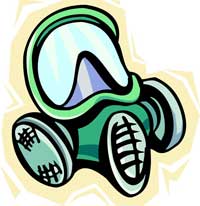 Notwithstanding the mixed news (to put it mildly) that individual investors have been getting from their nanotechnology stock portfolios, industry as a whole is pressing ahead with incorporating nanotechnologies in their products and processes. Unlike many other areas of science, nanosciences are capable of influencing a wide sweep of industrial and medical processes, from cleaner energy applications, to smart materials and revolutionary medical applications. It is increasingly difficult to know which products use nanotechnology or incorporate nanomaterials; nanotechnology consumer product directories give an idea where nanomaterials are used but are increasingly useless in helping to understand the full extent of nanotechnologies penetrating industrial manufacturing processes. Some consumer companies embrace 'nano' wholeheartedly and advertise their 'revolutionary' face creams, tennis rackets and car waxes; some, after increased scrutiny, have become very quiet about their nanotechnology activities (especially the large cosmetics and food companies); and some even change their company name to something that doesn't include 'nano' ('cleantech' or 'greentech' has become the new nanotech). Combine this technological shift that is taking place in industries across the board with the still existing lack of conclusive answers about the toxicity of nanomaterials, and you get a worrisome mix of industry pushing ahead unconstrained, a regulatory environment where key constituencies are ill prepared and underfunded to address the issues with the speed required, and public opinion that covers the whole range from activists calling for a complete moratorium on all things nano to snake-oil salesmen who promise nanotechnology stock tips that will make you a gazillionaire. Oh, and apparently now you can also add to this mix certain religious types in the U.S. who find nanotechnology is morally not acceptable.
Notwithstanding the mixed news (to put it mildly) that individual investors have been getting from their nanotechnology stock portfolios, industry as a whole is pressing ahead with incorporating nanotechnologies in their products and processes. Unlike many other areas of science, nanosciences are capable of influencing a wide sweep of industrial and medical processes, from cleaner energy applications, to smart materials and revolutionary medical applications. It is increasingly difficult to know which products use nanotechnology or incorporate nanomaterials; nanotechnology consumer product directories give an idea where nanomaterials are used but are increasingly useless in helping to understand the full extent of nanotechnologies penetrating industrial manufacturing processes. Some consumer companies embrace 'nano' wholeheartedly and advertise their 'revolutionary' face creams, tennis rackets and car waxes; some, after increased scrutiny, have become very quiet about their nanotechnology activities (especially the large cosmetics and food companies); and some even change their company name to something that doesn't include 'nano' ('cleantech' or 'greentech' has become the new nanotech). Combine this technological shift that is taking place in industries across the board with the still existing lack of conclusive answers about the toxicity of nanomaterials, and you get a worrisome mix of industry pushing ahead unconstrained, a regulatory environment where key constituencies are ill prepared and underfunded to address the issues with the speed required, and public opinion that covers the whole range from activists calling for a complete moratorium on all things nano to snake-oil salesmen who promise nanotechnology stock tips that will make you a gazillionaire. Oh, and apparently now you can also add to this mix certain religious types in the U.S. who find nanotechnology is morally not acceptable.
Mar 12th, 2008
 A number of researchers and organizations such as the Meridian Institute in the US believe that nanotechnology could contribute to some or all of the UN Millennium Development Goals, aiming for poverty reduction by 2015. Applications of nanotechnology that could benefit those living in poverty include diagnostics and therapies for infectious diseases, water purification and desalination, sustainable energy production, and environmental monitoring and remediation. Nanotechnology could also contribute to food security by boosting the yields of food crops, and packaging materials coated with nanoparticles that will allow food to be stored longer. So far, nanotechnology has been an area of 'technology push', with substantial investments in both generic research and technology development, in the absence of clear market demand. Worldwide, private investments in research have recently overtaken public funding, but the potential advantages of nanotechnology-based products compared to other alternatives are not yet clear. Also, there is a growing global debate on the ethical, legal and social aspects of nanotechnology, in particular the potential risks to human health and the environment posed by engineered nanomaterials. Nanotechnology is still mainly a solution looking for problems to solve, including sustainable development issues.
A number of researchers and organizations such as the Meridian Institute in the US believe that nanotechnology could contribute to some or all of the UN Millennium Development Goals, aiming for poverty reduction by 2015. Applications of nanotechnology that could benefit those living in poverty include diagnostics and therapies for infectious diseases, water purification and desalination, sustainable energy production, and environmental monitoring and remediation. Nanotechnology could also contribute to food security by boosting the yields of food crops, and packaging materials coated with nanoparticles that will allow food to be stored longer. So far, nanotechnology has been an area of 'technology push', with substantial investments in both generic research and technology development, in the absence of clear market demand. Worldwide, private investments in research have recently overtaken public funding, but the potential advantages of nanotechnology-based products compared to other alternatives are not yet clear. Also, there is a growing global debate on the ethical, legal and social aspects of nanotechnology, in particular the potential risks to human health and the environment posed by engineered nanomaterials. Nanotechnology is still mainly a solution looking for problems to solve, including sustainable development issues.
Feb 20th, 2008
 The list of great monuments and frescoes destroyed or seriously damaged by negligence or criminal action is dramatically increasing, and the biggest culprit is air pollution. Pollutants such as sulfur dioxide and nitrogen oxides are the most serious causes of degradation in carbonate stone, which in the form of marble, limestone and similar materials comprises some of the most important monuments and artifacts in the world. The main damage to monuments is that the stonework becomes sulphated through the transformation of calcium carbonate to calcium sulphate owing to the presence of sulphur dioxide. Two forms of deterioration then take place: the constitution of a black film in areas sheltered from the rain, and elsewhere the crumbling of the interior of the stone. For instance, UNESCO estimates that the surface eaten away annually in a cultural heritage site such as Venice represents 6 per cent of marble and stone monuments and 5 per cent of frescoes. The problem is not only what causes the damage but also how repairs are done. Quite often, the experts in charge of restoration work - architects, restorers, renovators - conduct their work without previous scientific studies of the damaged monument. Specifically the consolidation of decayed stone in historical buildings is a common intervention that can cause irreparable damage to the monument. Although commercial products, such as alkoxysilanes that are commonly used to consolidate stone, present unquestionable advantages they also present certain disadvantages totally ignored by the experts in charge of their application. Scientists in Spain are committed to the development of new nanotechnology materials specifically suited to stone-based historical structures. Their objective has been the development of a new nanomaterial which forms a crack-free gel in the pores of the treated stone.
The list of great monuments and frescoes destroyed or seriously damaged by negligence or criminal action is dramatically increasing, and the biggest culprit is air pollution. Pollutants such as sulfur dioxide and nitrogen oxides are the most serious causes of degradation in carbonate stone, which in the form of marble, limestone and similar materials comprises some of the most important monuments and artifacts in the world. The main damage to monuments is that the stonework becomes sulphated through the transformation of calcium carbonate to calcium sulphate owing to the presence of sulphur dioxide. Two forms of deterioration then take place: the constitution of a black film in areas sheltered from the rain, and elsewhere the crumbling of the interior of the stone. For instance, UNESCO estimates that the surface eaten away annually in a cultural heritage site such as Venice represents 6 per cent of marble and stone monuments and 5 per cent of frescoes. The problem is not only what causes the damage but also how repairs are done. Quite often, the experts in charge of restoration work - architects, restorers, renovators - conduct their work without previous scientific studies of the damaged monument. Specifically the consolidation of decayed stone in historical buildings is a common intervention that can cause irreparable damage to the monument. Although commercial products, such as alkoxysilanes that are commonly used to consolidate stone, present unquestionable advantages they also present certain disadvantages totally ignored by the experts in charge of their application. Scientists in Spain are committed to the development of new nanotechnology materials specifically suited to stone-based historical structures. Their objective has been the development of a new nanomaterial which forms a crack-free gel in the pores of the treated stone.
Feb 19th, 2008
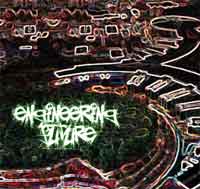 When the U.S. enacted its 21st Century Nanotechnology Research and Development Act in 2003 it was clearly understood that the impact of nanotechnologies on all aspects of society would be deeply transformational. As the National Nanotechnology Initiative was set up, its goals were not only defined as 'maintaining a world-class research and development program aimed at realizing the full potential of nanotechnology' but also to 'facilitate transfer of new technologies into products for economic growth, jobs, and other public benefit'. The first part regarding world-class R&D is happening. The second part, converting the research and development results into economic growth and jobs, is nowhere to be seen yet.
When the U.S. enacted its 21st Century Nanotechnology Research and Development Act in 2003 it was clearly understood that the impact of nanotechnologies on all aspects of society would be deeply transformational. As the National Nanotechnology Initiative was set up, its goals were not only defined as 'maintaining a world-class research and development program aimed at realizing the full potential of nanotechnology' but also to 'facilitate transfer of new technologies into products for economic growth, jobs, and other public benefit'. The first part regarding world-class R&D is happening. The second part, converting the research and development results into economic growth and jobs, is nowhere to be seen yet.
Jan 29th, 2008
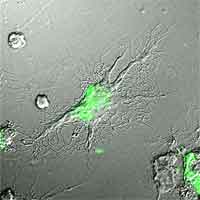 For centuries, man has searched for miracle cures to end suffering caused by disease and injury. Many researchers believe nanotechnology applications in medicine may be mankind's first 'giant step' toward this goal. According to Freitas nanomedicine is "...(1) the comprehensive monitoring, control, construction, repair, defense, and improvement of all human biological systems, working from the molecular level, using engineered nanodevices and nanostructures; (2) the science and technology of diagnosing, treating, and preventing disease and traumatic injury, of relieving pain, and of preserving and improving human health, using molecular tools and molecular knowledge of the human body; (3) the employment of molecular machine systems to address medical problems, using molecular knowledge to maintain and improve human health at the molecular scale." Nanomedicine not only has the potential to change medical science dramatically but to open a new field of human enhancements that is poised to add a profound and complex set of ethical questions for health care professionals. For instance, there is a fine line between medical and non-medical uses of nanotechnology for diagnostic, therapeutic and preventive purposes (e.g. non-medical implants in soldiers). The question of whether nanotechnology should be used to make intentional changes in or to the body when the change is not medically necessary is just one hot topic in a long list of concerns. The good news is that these questions are being asked, but there is still much work to be done, but despite the enormous promise of nanomedicine, and the considerable funding going into the field, the research into the ethical, legal and social implications of nanomedicine is comparatively minute. As Peter Singer wrote in his 2003 tutorial Mind the gap: science and ethics in Nanotechnology: 'The science leaps ahead, the ethics lags behind.' As with nanotechnology in general, there is danger of derailing nanomedicine if the study of ethical, legal and social implications does not catch up with scientific developments.
For centuries, man has searched for miracle cures to end suffering caused by disease and injury. Many researchers believe nanotechnology applications in medicine may be mankind's first 'giant step' toward this goal. According to Freitas nanomedicine is "...(1) the comprehensive monitoring, control, construction, repair, defense, and improvement of all human biological systems, working from the molecular level, using engineered nanodevices and nanostructures; (2) the science and technology of diagnosing, treating, and preventing disease and traumatic injury, of relieving pain, and of preserving and improving human health, using molecular tools and molecular knowledge of the human body; (3) the employment of molecular machine systems to address medical problems, using molecular knowledge to maintain and improve human health at the molecular scale." Nanomedicine not only has the potential to change medical science dramatically but to open a new field of human enhancements that is poised to add a profound and complex set of ethical questions for health care professionals. For instance, there is a fine line between medical and non-medical uses of nanotechnology for diagnostic, therapeutic and preventive purposes (e.g. non-medical implants in soldiers). The question of whether nanotechnology should be used to make intentional changes in or to the body when the change is not medically necessary is just one hot topic in a long list of concerns. The good news is that these questions are being asked, but there is still much work to be done, but despite the enormous promise of nanomedicine, and the considerable funding going into the field, the research into the ethical, legal and social implications of nanomedicine is comparatively minute. As Peter Singer wrote in his 2003 tutorial Mind the gap: science and ethics in Nanotechnology: 'The science leaps ahead, the ethics lags behind.' As with nanotechnology in general, there is danger of derailing nanomedicine if the study of ethical, legal and social implications does not catch up with scientific developments.
Jan 8th, 2008
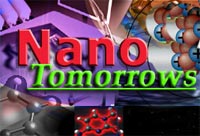 Given past revelations of previously top secret military technology programs there is a good chance that some 'black' projects somehwere tinker with advanced nanotechnology applications. But, you keepers of military secrets, relax. This Spotlight is not a piece of investigative journalism into the world of military black projects. It is the first in a series of eight scenarios that have just been published by the Center for Responsible Nanotechnology (CRN) - and we here at Nanowerk have posted the entire nanotechnology scenario project here. CRN's scenarios depict various versions of a near-future world into which transformative manufacturing concepts may emerge. Across eight separate storylines, an international team of policy, technology, and economic specialists organized by CRN imagined in detail a range of plausible, challenging events - from pandemics to climate crises to international conflicts - to see how they might affect the development of advanced nanotechnology over the next 15 years. Please keep in mind that this and the others seven scenarios are NOT predictions but fiction. CRN intends the scenarios to provide a springboard for discussion of molecular manufacturing policies and societal responses. While each scenario can be understood individually, the real value of the process comes from the comparison of multiple scenarios. A strategic response that appears robust in one scenario may be dangerous in another; an organization, community, or polity using these scenarios to consider how to handle the emergence of molecular manufacturing should strive for responses that are viable across multiple scenarios.
Given past revelations of previously top secret military technology programs there is a good chance that some 'black' projects somehwere tinker with advanced nanotechnology applications. But, you keepers of military secrets, relax. This Spotlight is not a piece of investigative journalism into the world of military black projects. It is the first in a series of eight scenarios that have just been published by the Center for Responsible Nanotechnology (CRN) - and we here at Nanowerk have posted the entire nanotechnology scenario project here. CRN's scenarios depict various versions of a near-future world into which transformative manufacturing concepts may emerge. Across eight separate storylines, an international team of policy, technology, and economic specialists organized by CRN imagined in detail a range of plausible, challenging events - from pandemics to climate crises to international conflicts - to see how they might affect the development of advanced nanotechnology over the next 15 years. Please keep in mind that this and the others seven scenarios are NOT predictions but fiction. CRN intends the scenarios to provide a springboard for discussion of molecular manufacturing policies and societal responses. While each scenario can be understood individually, the real value of the process comes from the comparison of multiple scenarios. A strategic response that appears robust in one scenario may be dangerous in another; an organization, community, or polity using these scenarios to consider how to handle the emergence of molecular manufacturing should strive for responses that are viable across multiple scenarios.
Dec 12th, 2007
 The food industry is excited about the potential of nanotechnology. Food companies are very much involved in exploring and implementing nanotechnology applications in food processing, packaging and even growing - but you don't hear about it anymore. At least not from the companies. Large industrial food companies, no stranger to big and expensive media campaigns, have buried the subject of nanotechnology in their public relations graveyard. Take Kraft Foods for example. While it took the industry's nanotechnology lead when it established the Nanotek Consortium in 2000, it has since pulled back completely on the PR front. The Nanotek Consortium even was renamed the 'Interdisciplinary Network of Emerging Science and Technologies' (INEST), is now sponsored by Altria, and its single webpage makes no mention of food at all. Doing our regular check on the websites of large food companies we again found not a single reference to 'nanotechnology' or even 'nano'. The same is true for large food industry associations such as the Grocery Manufacturers/Food Products Association (GMA/FPA), which represents the world's leading food, beverage and consumer products companies. Faced with a complete nanotechnology communications blackout from the manufacturers, it is left to activist groups like Friends of the Earth to frame the discussion. These groups are trying to figure out what the food industry is up to and if there might be any risks involved that we should know about.
The food industry is excited about the potential of nanotechnology. Food companies are very much involved in exploring and implementing nanotechnology applications in food processing, packaging and even growing - but you don't hear about it anymore. At least not from the companies. Large industrial food companies, no stranger to big and expensive media campaigns, have buried the subject of nanotechnology in their public relations graveyard. Take Kraft Foods for example. While it took the industry's nanotechnology lead when it established the Nanotek Consortium in 2000, it has since pulled back completely on the PR front. The Nanotek Consortium even was renamed the 'Interdisciplinary Network of Emerging Science and Technologies' (INEST), is now sponsored by Altria, and its single webpage makes no mention of food at all. Doing our regular check on the websites of large food companies we again found not a single reference to 'nanotechnology' or even 'nano'. The same is true for large food industry associations such as the Grocery Manufacturers/Food Products Association (GMA/FPA), which represents the world's leading food, beverage and consumer products companies. Faced with a complete nanotechnology communications blackout from the manufacturers, it is left to activist groups like Friends of the Earth to frame the discussion. These groups are trying to figure out what the food industry is up to and if there might be any risks involved that we should know about.
 Subscribe to our Nanotechnology Spotlight feed
Subscribe to our Nanotechnology Spotlight feed





